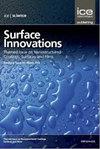表面增强拉曼光谱结合绿色催化衍生方案测定酒精饮料中甲醇的研究
IF 3.5
4区 材料科学
Q3 CHEMISTRY, PHYSICAL
引用次数: 0
摘要
完成表面增强拉曼光谱(SERS)检测有两个主要挑战。一是甲醇的拉曼散射截面小,二是衍生化策略。通过将催化策略与热吹扫分离富集装置耦合来解决这些问题。本研究采用甲醇催化制甲醛的方法,对酒精饮料中甲醇进行了定量分析。对于检测低酒精饮料中的甲醇,乙醇催化氧化乙醛与3-甲基2-苯并噻唑啉酮腙水合物(MBTH)在催化过程中相互作用产生的乙醛衍生物不会对甲醛的SERS信号产生较大干扰。在这种情况下,选择灵敏度较高的MBTH进行衍生化操作。在高酒精饮料中甲醇的分析中,为了避免乙醇产生的乙醛的干扰,采用了不与乙醛相互作用的乙酰丙酮衍生化法。在甲醇标准溶液中甲醛检测的基础上,对葡萄酒、清酒以及高酒精饮料中的甲醇进行了检测。从而实现了一种简便、快速的酒精饮料中甲醇的检测方法。本文章由计算机程序翻译,如有差异,请以英文原文为准。
Study of surface-enhanced Raman spectroscopy combined with green catalytic derivation scheme for the determination of methanol in alcoholic beverages
There are two main challenges in completing the surface-enhanced Raman spectroscopy (SERS) detection. One is the small Raman scattering cross section of methanol and the other is the derivatization strategy. They were solved by coupling the catalytic strategy with a thermal purge separation and enrichment device. In this study, the quantitative analysis of methanol in alcoholic beverages was performed as methanol was catalyzed to formaldehyde. For detecting methanol in low alcoholic beverages, the acetaldehyde derivatives generated by the interaction of ethanol-catalyzed oxide acetaldehyde with 3-Methyl 2-benzothiazolinonehydrazone Hydrochlide Hydrate (MBTH) during the catalytic process will not cause large interference with the SERS signal of formaldehyde. In this case, the MBTH with higher sensitivity is selected for the derivatization operation. In the analysis of methanol in high alcoholic beverages, acetylacetonate derivatization without interaction with acetaldehyde was used to avoid the interference of acetaldehyde generated from ethanol. Based on the detection of formaldehyde in methanol standard solutions, methanol was detected in wine and sake as well as in high-alcohol beverages. Thus, a convenient and rapid method was achieved for the detection of methanol in alcoholic beverages.
求助全文
通过发布文献求助,成功后即可免费获取论文全文。
去求助
来源期刊

Surface Innovations
CHEMISTRY, PHYSICALMATERIALS SCIENCE, COAT-MATERIALS SCIENCE, COATINGS & FILMS
CiteScore
5.80
自引率
22.90%
发文量
66
期刊介绍:
The material innovations on surfaces, combined with understanding and manipulation of physics and chemistry of functional surfaces and coatings, have exploded in the past decade at an incredibly rapid pace.
Superhydrophobicity, superhydrophlicity, self-cleaning, self-healing, anti-fouling, anti-bacterial, etc., have become important fundamental topics of surface science research community driven by curiosity of physics, chemistry, and biology of interaction phenomenon at surfaces and their enormous potential in practical applications. Materials having controlled-functionality surfaces and coatings are important to the manufacturing of new products for environmental control, liquid manipulation, nanotechnological advances, biomedical engineering, pharmacy, biotechnology, and many others, and are part of the most promising technological innovations of the twenty-first century.
 求助内容:
求助内容: 应助结果提醒方式:
应助结果提醒方式:


